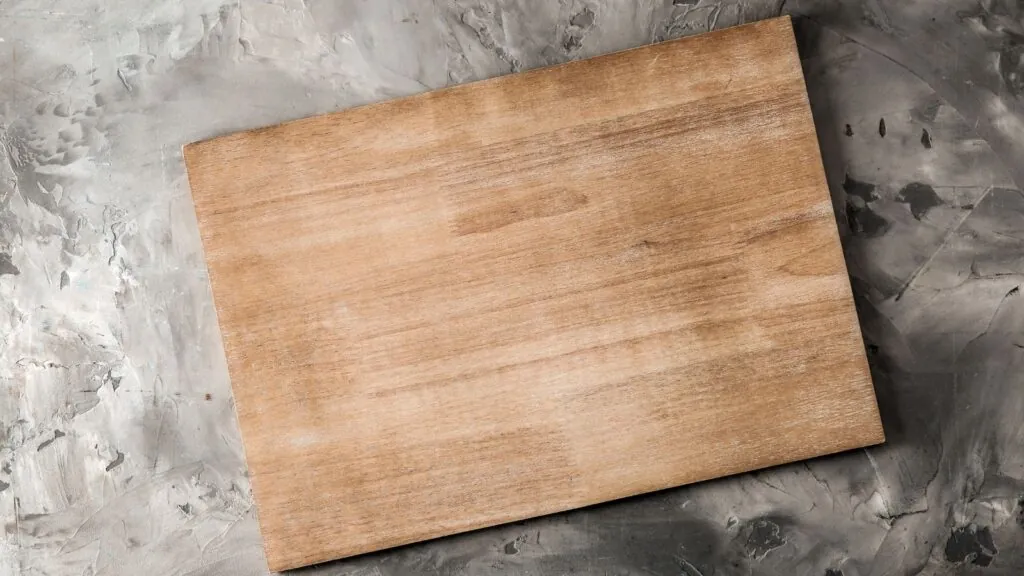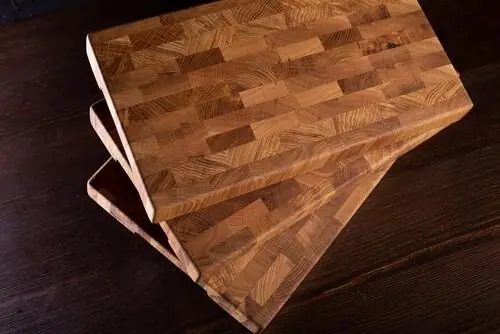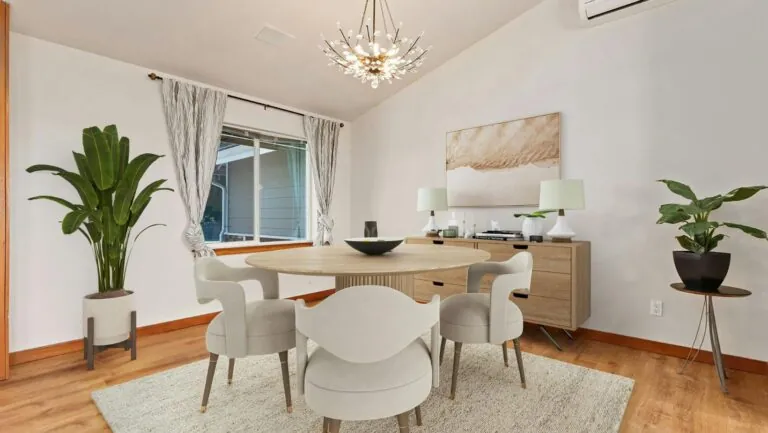A fine and multi-purpose Japanese blade deserves much more than any cutting surface. The right board can be the difference between a long-lasting razor-sharp edge and a blade that dulls quickly. Choosing the right one is not only about looks but about protecting your investment, preserving the craftsmanship, and maintaining performance for years.
In this guide, we break down the best cutting board materials for Japanese knives, how to pair them with your cooking style, and what to avoid to keep your edge in prime condition.
Table of Contents
ToggleWhy the Cutting Board Matters for Japanese Knives
Japanese knives typically have a thinner and sharper edge than most Western knives, and are designed for accuracy and balance. But that also means they are more prone to damage from hard or abrasive surfaces. When your knife meets the wrong surface—glass, ceramic or very hard plastic—the knife may roll, chip, or lose its clean edge faster. The right cutting board will cushion every cut and reduce impact stress while still allowing you good control from the base of a sturdy blade.
Best Materials for Preserving Your Edge
1. End-Grain Wood Boards
Why they work: End-grain boards feature vertical wood fibers that can “give” slightly under the knife, allowing the blade to sink in between the fibers with soft resistance rather than striking hard resistance. This self-healing property helps protect the edge.
Top picks: maple, walnut, and cherry. These woods have a good balance of hardness and resilience, making them excellent choices for an all-purpose knife, a nakiri, or a Japanese butcher knife.
Care tip: hand wash and oil often with food-safe mineral oil to prevent cracking and warping.
2. Edge-Grain Wood Boards
Why They Work: Slightly firmer than end-grain boards, edge-grain boards are durable yet gentle enough for Japanese blades. The edge-grain boards are often lighter and less expensive, perfect for everyday use.
Best for: Everyday prep work, including chopping vegetables, boning birds with a Japanese boning knife, and slicing proteins.
Care Tip: Keep them dry and oiled to avoid splitting.
3. High-Quality Rubber Boards
Why they work: The majority of thick, dense rubber boards seen in professional kitchens have their pros and cons. They are soft enough to protect your knife edge while still having enough resistance to allow for excellent traction, and easy sanitation. With rubber, you can’t scar it as much as plastic, and there are fewer crevices for bacteria to form in.
Best for: seafood preparation, boning work, and any area where slip resistance is relevant.
Care tip: Wash with mild soap and store upright to ensure even drying.
Materials to Avoid

- Glass or ceramic: Tough surfaces that can chip your blade at impact.
- Bamboo: Although sustainable, it’s harder and more brittle than most hardwoods, so it will wear down your edges faster.
- Rigid plastic: This material can dull your edges quickly and retain deep grooves that can harbor bacteria.
Matching the Board to Your Knife & Workflow
Consider how you most often use your knives:
- If you are prepping vegetables (with a nakiri or boning knife): End-grain wood provides the right balance between cushioning and control for precise cuts.
- If you are prepping meat (with a Japanese butcher knife or Japanese boning knife): Gripping capability and durability are key here, so a rubber board, or edge-grain wood for meat and heavier cuts, is recommended.
- If you are using an all-purpose knife for everyday tasks, a medium-sized end-grain board would meet most of your needs.
- Using different materials, such as wood for more delicate slicing and rubber for butcher work or seafood tasks, may also extend your knife’s life.
Maintenance Tips for Board and Blade Longevity
- Hand wash only—do not soak or put in the dishwasher.
- After washing, dry them upright to prevent warping.
- Oil the wood boards monthly to maintain an even moisture level.
- Clean rubber boards with a mild soap, avoiding harsh abrasives.
- Store knives in the proper way—on a magnetic strip or in a block, never loose in a drawer.
Your cutting surface is no less important than the sharpening of your blade. If you let either one fall into disrepair, the other one will suffer as a result.
Why Board Choice Reflects Knife Craftsmanship
A Japanese knife is not just a culinary implement—it’s a work of art that embodies centuries of knowledge, combining traditional techniques with modern performance. A proper cutting board signals respect for this craftsmanship. Using the right cutting surface keeps your knife sharper for longer, maintains its clean-cut feel, and allows you to perform prep work with precision every time.
Where to Find the Perfect Partner for Your Blade
If you’re looking to pair your Japanese knives with the perfect cutting surface, Stay Sharp has more than just expertly crafted blades. Our Montreal boutique offers a curated selection of accessories that not only meet the need for surfaces that are gentle on fine edges but are also aesthetically compatible with your Japanese knife. Whether you’re looking for an end-grain board to preserve that fine edge for as long as possible or if you just want to know exactly how to pair your blade with the appropriate surface, our team balances this ancestral point of view with practical advice that can help you keep your knives cutting at their best.
To help you understand which materials best suit your style of cooking, we also recognize the importance of safety in your cuts and the precision with which you cut. Similarly, you’ll also find sharpening services that support the care you provide to your cutting tools by using your new board, so maintaining your edges is a no-brainer. After you pick out your knife and board from our store, every slice, chop, and dice will feel smoother and more enjoyable.
Conclusion
Keeping it simple, selecting the right cutting board for your precise and functional Japanese knife is not just about usability, but is also about protecting the design integrity and superior edge retention of your knife. Make sure to choose a cutting board that complements your work style, keep it clean and conditioned, and your knives will perform wonderfully season after season.
Now it is your turn: What cutting board material do you gravitate towards for your Japanese knives, and why? Let us know in the comments.




